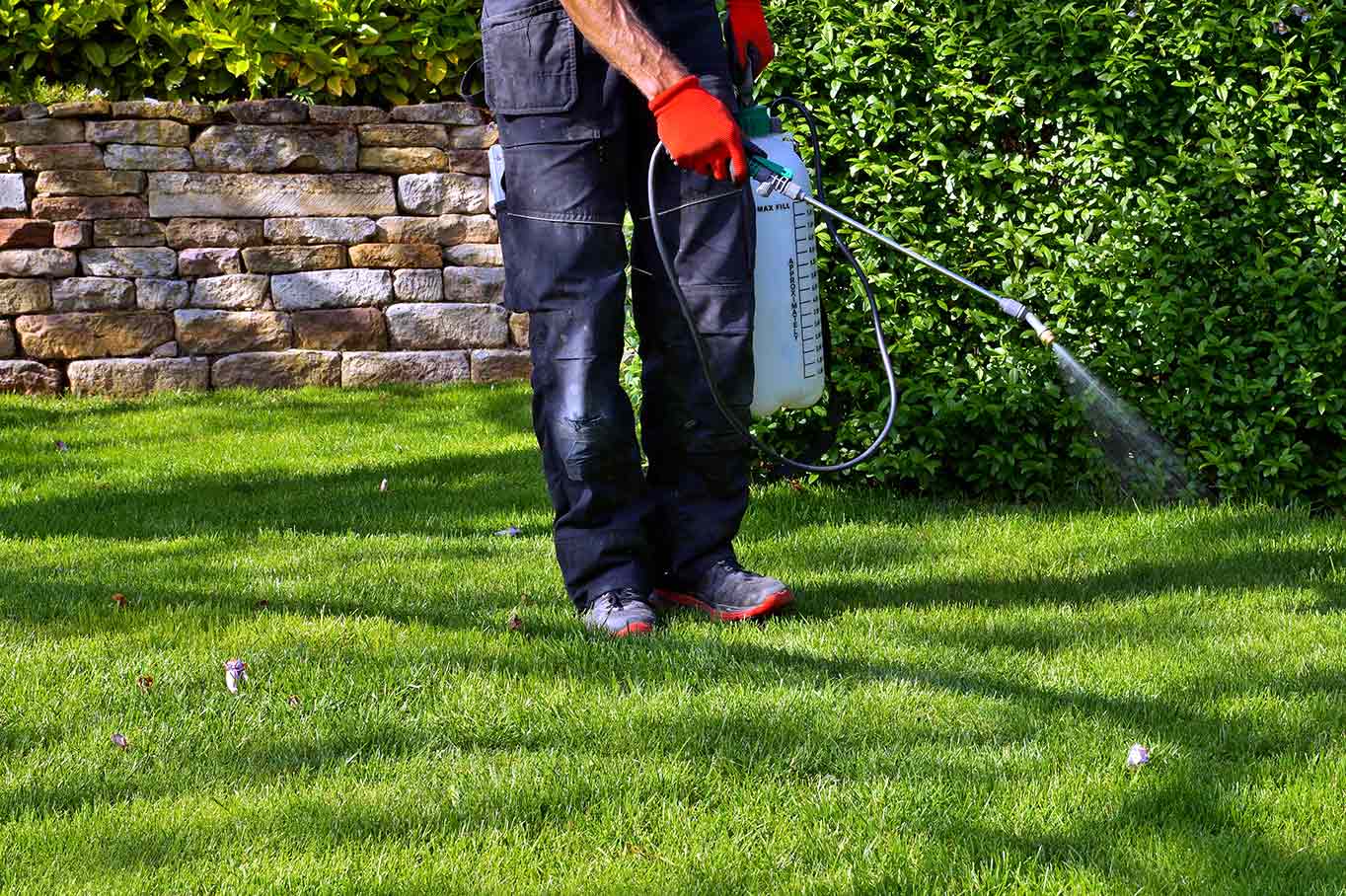Spring marks the start of Illinois’ prime growing season, making it the perfect time to repair winter damage and prepare your grass for the warmer months ahead. With fluctuating temperatures, heavy spring rains, and fast-emerging weeds, giving your lawn the right early-season care is essential for strong roots and long-term turf health. Below are our top spring lawn care tips for Illinois to help you kick off the season with a greener, stronger lawn!

One of the first and most important tasks of spring is clearing away leftover winter debris. Fallen sticks, matted leaves, pine needles, and compacted thatch can block sunlight from reaching new growth as your grass wakes up from winter dormancy. This debris also traps moisture during Illinois’ wet spring weather, creating ideal conditions for snow mold, turf disease, and patchy green-up. Even thin layers of wet debris can smother grass and slow early-season recovery.
Raking or blowing debris early in the season helps your turf dry faster, warm up sooner, and begin growing more uniformly. Removing winter clutter also improves air circulation and breaks up compacted areas. Homeowners with large lawns may benefit from using a mulching mower to chop light leaf matter into small particles that decompose naturally and enrich the soil.

As your lawn begins growing again, gradually adjusting your lawn mowing height encourages deeper roots and healthier turf. In spring, Illinois lawns, primarily tall fescue, Kentucky bluegrass, and perennial ryegrass, benefit from slightly higher mowing heights. Taller spring growth helps shade the soil, retain moisture, and suppress early-season weeds. Raise your mower deck early in the season, then slowly transition downward to your regular mowing height. Avoid cutting more than 1/3 of the blade at once to prevent stress.
Because Illinois predominantly uses cool-season grasses, early-season mowing plays a major role in rebuilding vigor after winter dormancy. Tall fescue lawns should be maintained between about 3.5 and 4 inches, while bluegrass may be kept slightly lower. Taller spring grass leads to improved drought tolerance heading into the dry, hot Midwestern summer and helps build a thicker lawn overall.
Best Tips For Spring Lawn Mowing:
.jpg)
Spring is the ideal time to apply a balanced, slow-release fertilizer that replenishes nutrients lost during Illinois’ long winter. A spring fertilizer supports strong root development and renewed green growth as temperatures rise. Most Illinois lawns benefit from fertilizer blends with a moderate nitrogen level and an NPK ratio such as 15-0-15 or 16-4-8. Nitrogen promotes healthy top growth, while potassium helps turf tolerate Illinois’ unpredictable spring climate.

Spring is the most critical time to stop annual weeds before they spread. As Illinois’ soil temperatures reach around 55°F for several days, nuisance weeds like crabgrass begin to germinate rapidly. A pre-emergent herbicide creates a barrier that prevents these seeds from sprouting. Applying pre-emergent in early spring dramatically reduces summer weed pressure and keeps your lawn thick and uniform.
Common Spring Annual Weeds (Pre-Emergent Targets):
Perennial weeds awaken quickly once temperatures rise, making early spring the ideal time for post-emergent herbicide treatments. These weeds begin producing new growth after winter dormancy, allowing systemic herbicides to move into the entire plant, including the roots, for more effective control. Treating them early prevents spreading and prepares your lawn for stronger competition against weeds in summer.
Common Perennial Weeds (Post-Emergent Targets):

Spring aeration is especially beneficial for Illinois lawns recovering from winter freezing, thawing, and compaction, particularly in areas with heavy clay soils. Core aeration pulls plugs from the ground, creating channels that allow air, water, and nutrients to reach the root zone more effectively. This is crucial during spring when the soil is still dense from winter moisture.
Overseeding corrects thinning areas, repairs winterkill, and boosts turf density. Use high-quality tall fescue or fescue/bluegrass blends, and lightly topdress with compost for improved seed-to-soil contact. Keep the soil lightly moist for 2–3 weeks to encourage germination. Combined aeration and overseeding helps create a thicker lawn better prepared for summer stress and weed pressure.

Though spring is generally wetter and cooler in Illinois, your lawn still needs consistent moisture as it enters its active growth period. Aim for about one inch of water per week, including rainfall, adjusting based on weather patterns. Avoid overwatering, as excessive spring moisture can cause shallow rooting and increase disease risk in areas already prone to fungus.
Every homeowner wants a thick, green lawn heading into summer, but Illinois spring conditions can make lawn care more challenging than expected. That’s where a professional lawn care service can make all the difference. With access to commercial-grade fertilizers, aeration equipment, and Illinois-specific turf knowledge, we help ensure your lawn starts the season strong and stays healthy all year long.
If you’re in Illinois and want expert help preparing your lawn for spring, contact us today and make this your best-looking season yet!